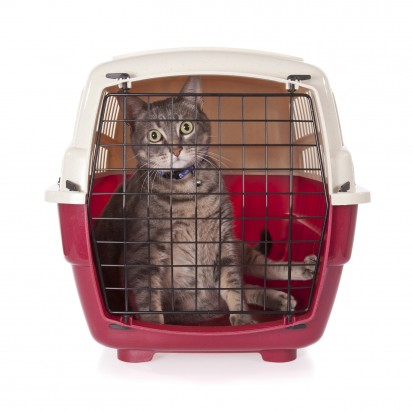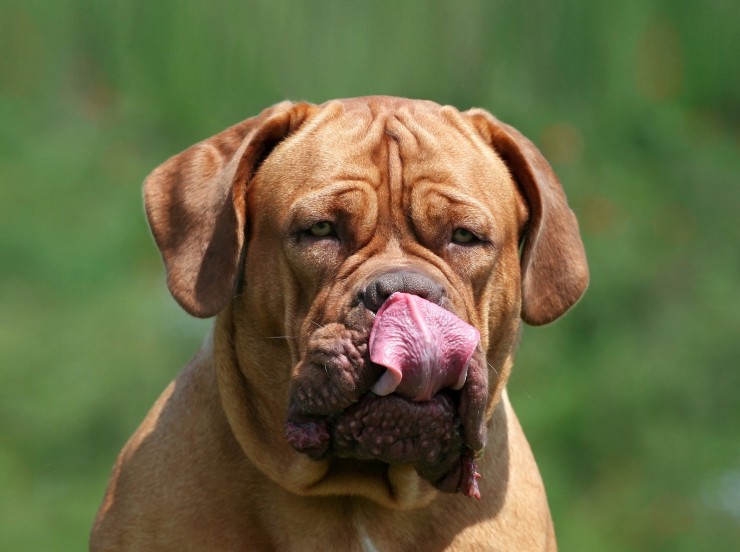
The skin is a body's largest organ. It acts as a barrier against harmful invasions from the environment. It also is one of the methods by which the body eliminates toxins.
Skin problems are probably the most common ailments seen in dogs. Usually they are not a disease in themselves, but a symptom of another underlying problem.
The most common reason for skin problems in both dogs and cats is an allergy. It may be dietary, environmental, chemical or drug related. Problems can also show up due to dietary deficiency or poor diet in general. Symptoms include such as itching, redness, and poor coat quality.
If no other reason for the problem can be found, it is time to look for food allergies. Changing to a premium or home-made dog food can usually make a big difference in a short time. Often simply adding raw meat to the diet is enough to see an improvement.
If the problem persists, or the pet is already on a healthy diet, then you must look at the specific ingredients in the food. Beef, chicken, corn and soy are the most common allergens, but cats and dogs, like people, can be allergic to anything. Try eliminating the above four things first, if that doesn't work a more drastic "elimination diet" may be necessary. This usually takes at least 6-8 weeks to get a good reading.
If no food allergy can be identified, or if eliminating an offending food has not solved the problem, then you must look to the environment - inside as well as outside. Once an allergic reaction has been allowed to continue for some time, the immune system is taxed and the body may become sensitive to other irritants.
Play detective! Ask yourself if anything has changed in the house recently; new carpeting, new cabinetry, fresh paint? These things can all give off chemicals which may cause illness. Are the symptoms seasonal? Pollens are a common allergen, and difficult to avoid, especially for a dog. Did the symptoms start suddenly? What happened just before they appeared - vaccinations? Other illness? Emotional upset? Finding and eliminating the cause can be a long and difficult process.
Essential Fatty Acids can be extremely helpful in clearing up mild skin problems. Herbs that assist the kidneys and liver in detoxifying are also very helpful. There are many natural topical products that can be used to calm the symptoms.
Bathing is not always the answer. If the dog's coat is dry, bathing may just make matters worse. If you must bathe, use a gentle shampoo. Oatmeal is a good shampoo ingredient to look for for a dog with itchy skin.
Another common cause of itching and redness for dogs and cats is flea bite dermatitis. Not all animals are allergic, but fleas will at least cause scratching or biting in all pets simply because they are annoying! Flea allergies however, cause the pests to be more than just an annoyance. Symptoms of flea allergy include hair loss, redness, and sometimes sores kown as "hot spots".
If you suspect your pet has fleas but you haven't actually seen any, look for the tell-tale black "specks" at the base of the hairs. Fleas particularly love the areas at the base of the tail, ears and hind legs (where they meet the belly). To determine if the specks are flea dirt (dried blood) and not just dirt, put some on a white paper or cloth and wet them. If they turn red, you've got fleas.
Some diseases cause symptoms of the skin and coat. Thyroid imbalances may cause dull, flaky or greasy coat and sometimes hair loss. Skin and ear infections are common with Cushing's Disease.
There are some specific skin diseases as well. Mange is caused by a mite and causes lesions and hair loss, usually around the mouth and eyes. This most often clears up on its own, but some dogs and cats cannot rid themselves of the mites and have a more severe case. Ringworm is a highly contagious fungus affecting cats, dogs and people (especially children). It shows up as circular lesions that are raw, hairless and scaly. The disease spreads rapidly.
Boredom or anxiety can cause a dog to lick its paws repeatedly and constantly, resulting in "lick granulomas". These are raised nodules, often rough and scaly. There is also a group of autoimmune diseases called Pemphigus which cause scaly skin, scabs and pustules. Some breeds are particularly susceptible to the disease.
Elyse Grau is an herbalist and a long-time pet owner, well-versed in pet nutrition and feeding. She is the author of Pet Health Resource, your web guide to a healthy, happy dog or cat. See her website for
http://www.pethealthresource.com
 Getting Your Cat To Accept A Cat Carrier
Getting Your Cat
Getting Your Cat To Accept A Cat Carrier
Getting Your Cat
 Tips for pet care in winter
Tips for pet care in winter
Winter is arriving
Tips for pet care in winter
Tips for pet care in winter
Winter is arriving
 Common Household Items That Are Toxic To Ferrets
Common Household
Common Household Items That Are Toxic To Ferrets
Common Household
 Demystifying Equine Terms And Phrases
Demystifying Equi
Demystifying Equine Terms And Phrases
Demystifying Equi
 The Five Most Expensive Dog Breeds To Insure
The Five Most Exp
The Five Most Expensive Dog Breeds To Insure
The Five Most Exp
Copyright © 2005-2016 Pet Information All Rights Reserved
Contact us: www162date@outlook.com